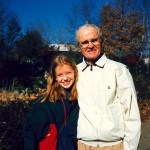Why Attachment Theory is Important When You Want More Closeness in Your Relationship

Does your partner love to touch and hold you? Do you welcome the affection or does it at times cause you to withdraw? Do you feel the need for more attention from your partner than they seem to need from you? Is your partner jealous or appear more inquisitive of your whereabouts when you are gone? Does your partner seem overly obsessed with how you don’t meet their needs to their satisfaction? While sometimes these behaviors originate from the trauma caused by previous bad relationships, experts like Hazan and Shaver (1987) do believe that early childhood experiences, especially in the early years of life, have a significant influence on how we feel and behave in our relationships as adults. These early bonding experiences may well set the stage for future adult relationships.
The first psychoanalyst to consider examining early childhood attachments was John Bowlby During World War II. Bowlby viewed trainloads of children of all ages being sent from London to the English countryside where they would be safe during the London Blitz by the Germans. Bowlby wondered what the effect was going to be on these children being separated from their parents, particularly from their mothers.
From his research beginning during WWII, over the next thirty years Bowlby developed and refined his Attachment Theory and how attachment can affect us from cradle to grave. The predictable responsiveness through physical and emotional connection with the attachment is even aligned within our nervous system. Dr. Robert Nemeroff, (1990), while conducting research at Emory University, was able to demonstrate anatomical changes in the brains of children who had experienced early childhood trauma. Emotional balance develops through the ability to understand and organize how to express needs when asking for connection with others. Through further research by Mary Ainsworth (1978), attachment was defined as accessibility, responsiveness and emotional engagement.
The four attachment concepts are: Secure, Anxious/Preoccupied, Avoidant/Dismissive, and Fearful/Avoidant.
Secure Attachment
In the Secure Attachment, in general, both parents demonstrate parental empathy with consistency towards their children. Those children as adults are more likely to be comfortable with intimacy, sexual satisfaction, and know how to reach for others with success. They trust easily, are openly warm and comfortable with mutual dependence. They rarely worry about abandonment. A person raised with secure attachment behavior enjoys a deeper connection with a loved one and when the connection is momentarily lost, they recover easily. They feel worthy of being loved and cared for.
The exceptions happen when there is an unfortunate, unexpected or purposeful end of a secure attachment. Examples of such an events would be the death of a parent or a significant enough trauma during the childhood years to cause such distress that separation and emotional isolation occurs. Two such events come to mind. One was when a child lost his brother in an automobile accident. The second was when a child’s father contracted a terminal neurological disease and his son witnessed his progressive physical and mental deterioration. These events clearly had an impact on their secure attachments. What is important to point out, however, is that through therapy and continued support from parent(s) and extended family, the loss of their secure attachment was temporary due to this support.
Anxious/Preoccupied Attachment
Trauma may also be caused by inconsistent attachment by the first caregivers. These kinds of traumas may lead to perceiving others as inaccessible, unresponsive or threatening. Regulating relationship emotions becomes hyper-activated. Reactions may vary from clinging behaviors and little tolerance for being alone to giving with the expectation of reciprocation but may become resentful. Emotional distress increases with perceived rejection or indifference. Those with anxious attachments are insecure when the connection is temporarily lost, often experiencing anxiety, stress, and pursuit of the other. Fear of abandonment is constant.
This attachment style may be characterized by parents getting married too young or unexpectedly, not being mature enough and unprepared to know the sacrifices that need to be made to raise children. Generally they are well-intentioned but overcome with the changes and under-prepared to cope with the stressors of career and/or raising children.
Avoidant/Dismissive Attachment
Due to the early attachment with parents being less affectionate, cold or rejecting, emotional distance is preferred by these people. In Avoidant/Dismissive Attachments, emotions are strictly regulated either by externally and/or internally denying and negating relationships. The people fear closeness, feel uncomfortable and do everything to avoid intimacy, resulting in less positive relationships. They are rarely concerned with loss, even may detach emotionally when present by withdrawing through dissociative behavior, intellectualizing their feelings or simply disconnecting. Their focus is on themselves, except when they act to placate others. Relationships are rarely long term because they prefer spending their time doing what they want to do and being independent.
Fearful/Avoidant Attachment
A chaotic childhood with less attentive caring and no relief from detachment or trauma can create the Fearful-Avoidant who as an adult is fearful of any kind of intimacy and does everything needed to avoid being hurt. They both seek and fear love. All must be defined and consistently reassured or the person can become moody, distrustful or angry. These behaviors often can lead to destruction of the relationship.
To summarize, as one grows older, the need for physical attachment to the original caregiver changes but manifests itself in one’s adult relationships. So, think about your partner and how you relate to each other. And certainly there are varying degrees with each attachment style so nothing is an absolute one way versus another.
However, if you know a bit of the person’s relationship history with their parents, there are indications of why they act as they do as adults and maybe even why their relationship with you is similar to their earliest attachments, good, fair or bad. Then look at your early childhood and how it manifests itself in your own attachment style. Understanding these relational dynamics is necessary to all successful relationships and is an integral element in couples therapy (Travis, et al., 2001).
Restoring or creating positive emotional attachment is essential to shaping successful relationships.
Dr. David Raque and Susan Todd-Raque
Ainsworth, M. D. S. (1978). Patterns of attachment: A psychological study of the strange situation. Hillsdale, NJ: Erlbaum.
Bowlby, J. (1969). Attachment and loss (Vol. 1). New York: Basic Books.
Hazan, C., & Shaver, P. (1978). Romantic love conceptualized as an attachment process. Journal of Personality and Social Psychology, 52, 511-524.
Travis, I. A., Bilwise, N.G. & Horne-Meyer, H. I. (2001). Changes in clients’ attachment style of the course of time-limited dynamic psychotherapy, Psychotherapy: Theory, Research, Practice, Training, 38(2), 149-159.






